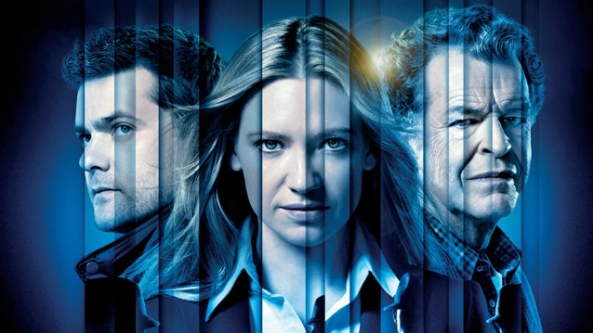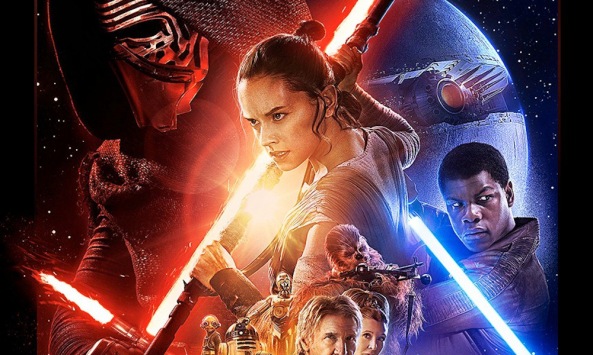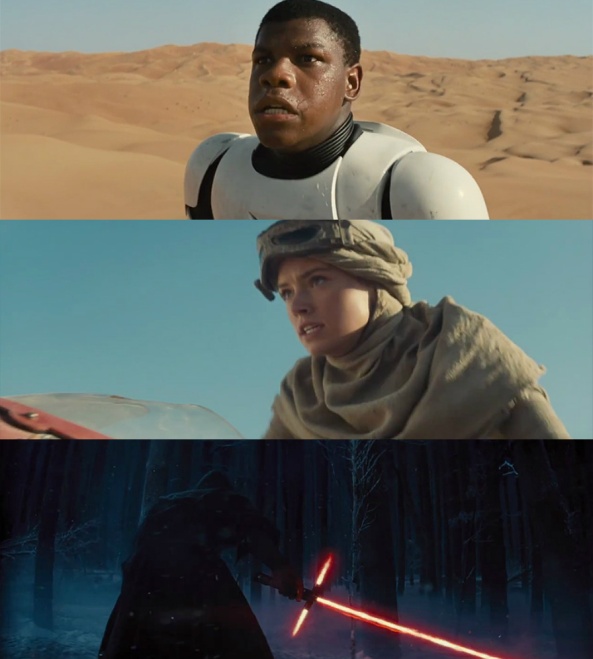Back in 2008, I stopped watching Fringe after the second episode. That wasn’t because it was bad and I had a feeling that I might start watching it again later, but in the early episodes it wasn’t delivering what I wanted it to, which was something like the amazing shockwave that J.J. Abrams and his staff delivered with the first episode of Lost. In retrospect that may have been a blessing, since the first episode and entire first season of Lost turned out to be a high point that even the show itself was unable to equal in later seasons. Fringe, by contrast, came across as a tepid imitation of The X-Files, a show that I remembered fondly but didn’t want to have to sit through again. It had, after all, been done before.

The jigsaw puzzle comes together.
Turns out I had it all wrong. Lost was a bomb, a muddled mess of a show that got only one thing (aside from a great cast) right: hooking the viewer so perfectly with its first episode and first season that for a lot of us it was hard to get unhooked. Fringe, on the other hand, is genuinely great television, even though it didn’t look that way at first. I’m now halfway through watching its third season on Netflix Streaming and can already see that it’s a much better show than Lost ever managed to become again after its first season and really isn’t all that much like The X-Files, a show that made only one major mistake: staying on the air too long. However, both shows fall into a category that I’ve only recently begun to realize exists: jigsaw puzzle television. Think of jigsaw puzzle TV as the point where standalone television meets serial TV and produces something that can go back and forth between the two or even gradually morph from one into the other.
The X-Files started at a time (1993) when only a few prime-time shows, like Hill Street Blues and St. Elsewhere, had played around with the idea of serial television, introducing plots that weren’t neatly tied up in a single episode but that continued over an entire “arc” of episodes. This was a concept that made television executives so nervous that early on, when Hill Street Blues was getting ratings so low that it probably would have been cancelled if NBC’s overall ratings hadn’t been so bad that the whole network was in danger of getting cancelled, an edict went down from the network heads to the show’s producers demanding that at least one plot (out of many simultaneous ones) be both introduced and resolved in every episode.
The X-Files couldn’t make up its mind whether it wanted to be standalone or serial, so by the second season it was doing both, alternating between standalone “monster of the week” episodes and serial “mythology” episodes, which usually consisted of two or three parts each, which gradually filled in pieces of the backstory. The standalone X-Files and the serial X-Files were almost two different shows, with events in a standalone episode having very little effect on character relationships and plot events in the serial episodes. Both the mytharc and standalone episodes were done very well. But every now and then something would happen in a seemingly standalone episode that would turn out to be a part of the show’s continuing mythology. And that, I would argue, was when jigsaw puzzle television was born.
The two current masters of jigsaw puzzle TV shows are J.J. Abrams and Joss Whedon, though those are as much brand names now as they are human beings. Both Abrams and Whedon have gotten too good at making monstrously successful films like the Star Trek reboots and The Avengers to spend the kind of time with television that they used to, but they’ve managed to put together teams of producers and showrunners who can mimic their styles amazingly well and I’m convinced that both men are heavily involved in the creation of their shows and draw up detailed blueprints that their writing staffs can then follow in putting their shows together while the big guys themselves are off making billions of dollars in the more lucrative parts of their empires. In effect, they’re the guys who put together the big pictures that their writing staffs then cut up into the jigsaw puzzle pieces.
Fringe appeared initially to be an X-Files clone simply because the first episode featured a male-female pair of FBI agents who found themselves involved with supernatural and high-tech phenomena. Fortunately, the male half was immediately killed off and Anna Torv’s agent Olivia Dunham never became a clone of The X-Files Dana Scully, which may have come across as bait and switch to X-Files fans who tuned in hoping to see a reboot of their favorite show but was actually a clever move on the part of the showrunners. It allowed the introduction of one of television’s quirkiest teams of leading characters, Dunham and her new partners, the father and son team of Walter and Peter Bishop (John Noble and Joshua Jackson). All three leads are great, but it’s brilliantly crazy scientist Walter, one of the most cleverly conceived and bizarrely gonzo characters on TV, who really makes the show work. The fact that he seems to be part of the show’s mysterious backstory but is simultaneously so batshit crazy that he can’t remember exactly what part of it he is is what keeps the show from being like anything else anywhere on TV, the X-Files included.
The reason Fringe is a jigsaw puzzle show is that the early episodes bear a strong resemblance to standalone episodes of The X-Files, revolving around similar mysterious phenomena like people abruptly melting into warm jello or suddenly finding themselves cut in half, but every episode also adds a surprise piece of the show’s serial continuity, usually at the very end. As it becomes clear that elements like the apparently malevolent corporation Massive Dynamics and its elusive founder William Bell (whose very casting is a delightful surprise in itself) are going to figure into the show in a big way, it also becomes apparent that the pieces of the jigsaw puzzle are going to fit together into some kind of stunning and unexpected picture, as indeed they do.
In some ways, Fringe is the polar opposite of Lost. Abrams tried to make Lost a continuous serial. Unfortunately, the show was put together quickly, had a great beginning and great first season, then just became muddled. Completely serial shows like this are almost impossible to do and the only truly great example I can think of is Breaking Bad. Fringe, on the other hand, never really tried to be completely serial, and it was much better for using the jigsaw technique. You could view at least half the episodes as standalone stories, but somebody put a lot of work into creating a terrific picture that would come together out of that jigsaw puzzle. Even if the quality of the show takes a nose dive after the middle of Season Three (which is where I am now), it will still have been a terrific jigsaw puzzle for one and a half seasons longer than Lost was. And I’m told it remains good for much longer than that.
Joss Whedon has elements of the jigsaw puzzle show in his early programs, like Buffy and Angel, but his first true jigsaw puzzle show was Firefly, which unfortunately was only given 14 episodes to put itself together. The jigsaw puzzle pieces in those 14 episodes, though, were interesting enough that Whedon was then given an entire movie, the terrific Serenity, to give us an idea of how wonderful the full puzzle would have turned out to be. The major pieces that we got were Simon and River Tam, a wealthy doctor and his sister on the run from the show’s evil government, the Alliance; Shepherd Book, a mysterious preacher with a very unpreacherlike past combined with a genuinely warm and comforting personality; and the Reavers, savage cannibals of unknown origin who appear unexpectedly in burned-out spaceships to eat the unfortunate populations of entire cities or perhaps even entire planets. Whedon got the chance to complete the parst of the puzzle having to do with the Tams and the Reavers in Serenity and he supposedly explains Shepherd Book’s backstory in a comic book, which I have yet to read. I wish we had gotten to see the completed puzzle lament the way it was meant to be seen, on television, and suspect it was altered considerably to fit a two hour film, but what we got was still great. We can blame the Fox network for not allowing us to see it the way it should have been seen. (Why Whedon did another jigsaw puzzle show, Dollhouse, for Fox is beyond me, but I’m sure there’s an explanation for it somewhere. At least Fox allowed him to wrap Dollhouse up in a second season, but the pieces were put together in such a rush that the completed puzzle was partly brilliant, partly a complete mess, and wasn’t wrapped up nearly as well as Firefly was.)
Whedon’s latest jigsaw puzzle show is Marvel’s Agents of S.H.I.E.L.D., a sequel of sorts to The Avengers but on a much lower budget. Though I doubt that Joss Whedon has much to do with the show on a day-to-day basis, I’m sure he had a lot to do with putting together the initial jigsaw puzzle before turning it over to his brother Jed Whedon, his sister-in-law Maurissa Tancharoen and former Angel writer Jeffrey Bell. So far the standalone episodes have only been fair-to-middling, but the pieces of the jigsaw puzzle — what happened to Agent Coulson (Clark Gregg) after he “died” in The Avengers; what horrible event occurred to Melinda May (Ming Na Wen) that gave her the hated nickname “the Cavalry;” why strange artifacts keep turning up; and why they’re allowing a known terrorist like Skye (Chloe Bennet), who seems to be a quadruple agent — at least — for S.H.I.E.L.D. and its enemies, fly on their tricked-out jet — look like they could form a pretty interesting picture whenever they start falling together.
The problem with jigsaw puzzle shows is that they start out slow and usually don’t look more than mildly interesting in early episodes, sometimes in early seasons. That’s certainly the case with S.H.I.E.L.D., which could be mistaken for any run of the mill spy-fi show if you aren’t watching closely. I’m watching it because I’m convinced that it’s going to become great when the pieces of the jigsaw puzzle fall together. (I might note that, with the possible exception of Firefly, none of Joss Whedon’s shows has ever been more than mildly interesting before its second season, just as J.J. Abram’s Fringe didn’t really become great until its third season.) The question now becomes whether S.H.I.E.L.D. will remain on the air long enough for the pieces of the puzzle to come together and the show to realize its full potential. Ordinarily I’d doubt that it would make it that far, but it’s on ABC, which is owned by Disney, the company that also owns Marvel Studios, so maybe it will be given the chance to develop.
When it does realize its full potential, I truly hope that S.H.I.E.L.D. will be as great a jigsaw puzzle show as Fringe.


